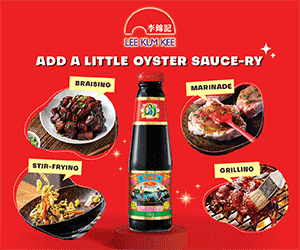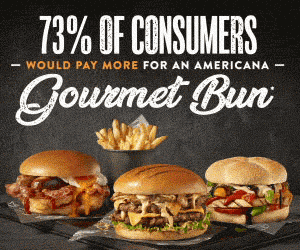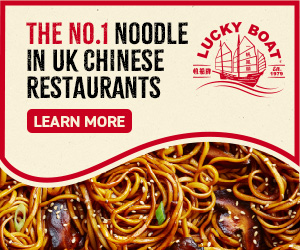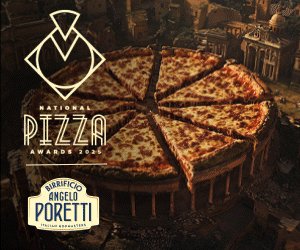Feature: Pour Decisions

From lesser-known wines to sought-after spirits and marvellous mixed drinks, the perfect boozy offering requires variety and balance
It’s no secret that Brits love to kick back and relax with a drink. An inkling of sunshine, regardless of how brief, brings punters to the on-trade in droves – and even a smattering of rain can’t dampen the nation’s craving to get stuck into a top-notch tipple. While cold pints of beer and cider will never go amiss, operators shouldn’t underestimate the popularity and profitability of well-considered wine and spirit options.
Careful curation
There are lots of things to think about when constructing your beverage menu. When it comes to wine and spirits, creating a list that echoes your establishment’s personality, complements your food menu and resonates with guests is no mean feat. As Francesco Putigano, bar development manager at San Carlo, explains: “A well-planned wine list can elevate the occasion, while a hurried one can leave a bitter taste in the mouth. The best wine and spirits lists are thoughtful, accessible, playful and aligned with the venue’s theme. Knowing how to make the wine list chime with your offering and charm your clientele is a science and an art form.”
Your menus present a prime opportunity to communicate your brand message to guests. Throughout the planning process, think about the way your wine and spirits offering interacts with your food – do you have a drink that complements a certain dish and makes the flavours pop? If so, note it down as the ideal pairing option to enhance the dining experience.
“Choose suppliers who understand your venue and can meet the expectations of your wine list,” adds Putigano. “Structuring your wine and spirits list into cohesive groupings can also be an effective approach to presentation.”
At La Quinta, a family-run restaurant and entertainment venue in Benfleet, Essex, the team focus on small vineyard family-style producers in the Algarve and Bordeaux areas, ensuring a point of difference in the wines offered in venue. “We tend to gravitate and lend our support to collaborations with family-run businesses, as we come from the same background,” says bar and restaurant manager Gina Duke.
To show off your unique wine offering, take time with the design and layout of your menu, ensuring it’s easy to read and visually appealing. “Use quality card stock and include images where possible,” advises James Dainty, business unit controller at Lanchester Wines. “Ensure the descriptions are clear and informative, helping customers make confident choices. Treat your wine list as a marketing tool; highlight new arrivals, special features or pairing suggestions. This can encourage customers to try something new and enhance their dining experience.”
Equal care and attention is owed to your spirits, to ensure a consistent standard across your beverage offer. At La Quinta, liquor must offer both flexibility and great flavour to earn its place on the bar. “Spirits have to meet the profile of the venue and the requirements of guests,” says Duke. “We are proud to serve, and prefer to specialise in, just a few – but they have to be well made and distilled. We want to give consumers something bespoke and catered to their taste, while still keeping on top of trends and not alienating our regular clientele.”
Premium vs alternative
Operators and suppliers alike have witnessed an increasing openness among consumers to explore new wines. Dubbed the ‘Saturday Kitchen Effect’, the trend sees TV viewers inspired to try interesting serves after tuning in, often stepping away from their usual reliance on the super varietals. As Dainty proposes: “This presents a great opportunity for the on-trade sector. While it’s essential to have a core selection of reasonably priced and recognisable grapes (as 20% of the wines on your list will account for 80% of sales), there’s also room to experiment with unique offerings within a manager’s special or wine of the week’. Collaborating closely with your wine supplier can help identify which new wines to introduce, ensuring they are both intriguing and affordably priced.”
Value for money remains a key driver of consumer buying decisions – but operators confuse the term’s meaning with ‘cheap’ at their peril. Although there are ‘safer’ grape varietals to keep at the forefront, they must never come at the expense of quality.
“Malbec remains the fastest growing red grape wine variety in the UK, making it a must-have on wine lists,” says Matt Towe, head of marketing for Bidfood brand Unity.
“Prosecco also continues to be a fan favourite with an incredible 130m cases sold a year in the UK, making up a staggering 20% of global consumption,” he adds. “However, price has a big influence here, meaning we’re seeing lower-quality liquids at a cheap price in the market. So, if you’re looking to attract interest and take advantage of Prosecco’s popularity, you’ll need a good quality offering at the right price.”
Putigano suggests that many consumers are choosing expensive wines less often – a trend he expects to continue throughout the year. From a business perspective, this shift has opened the door for alternative wines to gain traction. And with a significant surge in customer interest for organic, natural and sustainably-produced wines over the last two years, with organic options projected to grow 8.7% a year until 2027, clearly demand is rife. “The cost of living crisis has made value a top priority for many, and with the general decline in alcohol consumption, ensuring good value is essential,” he chimes. “Independent specialist wine producers are also gaining appreciation in the industry for offering better quality at more competitive prices.”
But where San Carlo has noticed a growing taste for the alternative, La Quinta is seeing heightened demand for more premium options, recognising a marked increase in better middle-line wines. “People seem to be going out less often but have a better experience when they do, splashing out and buying better-end products,” says Duke. “We are seeing more experience-led consumers investing in more fine wines, as well as a lot more people trying out new world wines.”
Clearly, consumers appreciate the freedom to choose a glass or bottle from the most suitable price point at the time; so, regardless of how extensive your wine menu is, offer low-, middle- and high-end options to ensure that every base is covered.
Global tipples
The spirit segment is also seeing a surge in flavour innovation, with products like flavoured vodka and gin leading the charge. As Putigano observes, Japanese shochu, Korean soju and Chinese baiju are among some of the oldest and most widely consumed spirits worldwide, despite still being new to many US and European consumers. But the growing appetite for authentic global flavours has opened menus up to previously uncharted serves, bringing brand-new taste dimensions to venues across the UK. As Putigano notes: “While Japanese whisky has been gaining popularity for several years, a broader range of Asian spirits are expected to gain momentum in 2024.”
For the folk at La Quinta, the most exciting spirit developments lie in the realms of tequila and gin. “With the former, a rise in interest across the UK means tequila innovations are being appreciated by consumers, whereas gin seems to be more Americanised now, with a stream of new infusions being greatly received over there,” says Duke.
There remains a huge buzz around tequila and mezcal. Tequila, once the ‘forfeit shot’ to avoid at all costs, is now being used as the base for delicious cocktails like the margarita and the tequila sunrise. And it’s part of the wider cocktail market, which is thriving – now worth a hefty £688m and regularly enjoyed by 9.4 million people across the UK (Bidfood).

Keeping it cool with a Paloma
Just like it was in the 1700s, during the ‘Golden Age of Piracy’, rum has come back into swashbuckling demand and is now widely featured across the on-trade. This is largely owed to the enormous growth of the cocktail market, with serves like the daiquiri, piña colada and mojito working wonders for rum sales.
“While this used to be a specialist category and high-quality cocktails were difficult to come by, we now see 45% of outlets stocking cocktails at varying levels,” says Towe. “Operators should ensure they have a strong cocktail menu to tap into this popularity,” he adds. “They should consider seasonal and limited-edition options to keep consumers interested and encourage them to come back and try new flavours.”
Customers today are always on the lookout for fresh and bold taste experiences, with spicy mixed drinks and other premium serves being the perfect solution to these demands. “Savoury and spicy beverages are a major trend for 2024, and operators can tap in with the help of flavoured salt,” suggests Robert La Francesca, commercial director at Maldon Salt Company. “By integrating salt into their offerings, on the rims of glasses or in classic cocktails to balance out bitterness, operators can stay current and deliver a premium drinking experience.”
Of course it’s important for businesses to keep on top of trends – but they must also be aware that many don’t tend to last half as long as they used to. Social media has helped provide a platform to showcase creative and colourful tipples, but things move at 100mph, meaning trends and ‘special’ offerings can fast go out of date.
“To keep consumers interested, operators need to stay ahead of the curve and update consumers with the latest trends and popular drinks, but they must also be willing to regularly mix things up,” says Towe. “Offering rotational schemes like a wine of the month and guest cocktails will also help to create excitement and interest, even from regulars.”
The marketing machine
You’ve put a lot of time and effort into your venue’s wine and spirits offering, but your brand and marketing power can really maximise its potential. It’s vital that you communicate the magic of your menu to guests, ensuring they’re aware of unique signature serves, as well as great value deals and limited-time specials to truly capitalise on sales. There are more platforms available to restaurateurs now than ever before, and many will have a whole venue just waiting to be effectively utilised.
“Advertise on TV screens, take advantage of any black or white boards, use social media channels – and don’t forget about the 10-, five- and two-metre rules!” warns Towe. “Walk those distances through the venue and look for the hotspots where advertising could best fit.”
Finally, staff training is crucial. Giving your team the confidence to talk about what’s available and encouraging them to upsell will help bring the profits home. Consumers actively seek insightful product knowledge and recommendations, so keep staff clued up and aware of what’s important, then watch the orders roll in!















